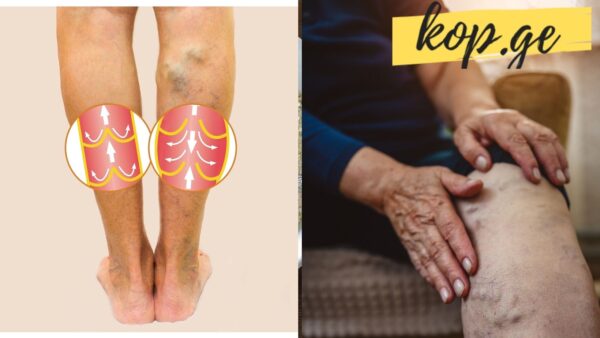How to Prevent Varicose Veins – The Simplest Methods That Are Truly Worth Trying

Many people struggle with unwanted changes in their veins, especially in the legs. While varicose veins can be hereditary, the good news is that there are simple, practical steps you can take to help prevent their development or slow their progression.
Although varicose veins may seem like just a cosmetic concern at first, they can lead to discomfort, pain, swelling, and even serious complications if ignored. Understanding the causes and risk factors—and knowing how to act early—can make a big difference in maintaining healthy veins for life.
What Are Varicose Veins and Why Do They Develop?
Varicose veins are swollen, twisted veins that usually appear just under the surface of the skin, most often in the legs. They are caused by weakened or damaged vein walls and valves. When these valves don’t function properly, blood begins to pool in the veins instead of flowing efficiently back to the heart.
Over time, this leads to bulging, visible veins that may feel heavy or achy. In more severe cases, it can even result in leg ulcers, blood clots (thrombosis), or chronic inflammation.
Causes and Risk Factors
The primary reason many people develop varicose veins is due to a congenital weakness in the connective tissue that makes up vein walls. This condition often runs in families. However, genetics isn’t the only factor. Several other risks can increase the likelihood of developing varicose veins:
Gender: Women are more prone than men due to hormonal influences that relax the vein walls.
Pregnancy: Hormonal changes, increased blood volume, and pressure on the pelvis during pregnancy can weaken veins.
Sedentary lifestyle: People who spend most of their day sitting or standing without much movement are more likely to experience poor circulation in the legs.
Excess body weight: Being overweight adds extra pressure to leg veins, encouraging the development of varicose veins over time.
Age: As we get older, connective tissue becomes looser, and vein function naturally declines.
Understanding your risk profile is the first step toward taking action.
Prevention: Simple Daily Habits That Really Work
If you’re in a higher-risk group, or simply want to protect your vascular health, the best thing you can do is stay active and support healthy circulation. Preventing varicose veins doesn’t require major lifestyle changes—just consistent habits.
Here are the most effective, easy-to-implement strategies to reduce your chances of developing varicose veins:
1. Move More – Regularly
The most important rule: keep moving. Physical activity helps stimulate blood flow in the legs, strengthens the muscles that support vein function, and maintains elasticity in the vein walls.
Great activities include:
Walking
Swimming
Cycling
Yoga or gentle stretching
Try to move your body every day, even for short periods. Walking up stairs instead of using the elevator is a small change that makes a big difference over time.
2. Avoid Prolonged Sitting or Standing
Whether you’re working at a desk or on your feet all day, static positions harm circulation. If you sit or stand for hours, your leg veins must work harder to return blood to the heart.
To counteract this:
Take a short break every hour.
If sitting, elevate your legs when possible.
If standing, shift your weight from one leg to the other, or do small calf raises.
These mini-movements help push blood upward and prevent pooling.
3. Try Simple Leg Exercises
A few easy exercises you can do while working or watching TV:
While sitting: Lift your legs and rotate both ankles in circular motions—first clockwise, then counterclockwise. Or stretch your feet forward and back repeatedly.
While standing: Rise up on your toes, hold for a second, then lower your heels. Repeat 10–15 times. This activates your calf muscles, which act like a pump for your veins.
Doing these a few times a day can significantly improve leg circulation.
4. Choose Comfortable Footwear
High heels may be fashionable, but they’re not friendly to your veins. Heels shift your weight forward and limit the natural pumping motion of your calf muscles, making blood flow more difficult.
Try to:
Reserve high heels for special occasions.
Wear flat, supportive shoes for daily use.
Walk barefoot on soft surfaces when possible to activate foot and leg muscles.
5. Watch Your Weight
Maintaining a healthy weight eases pressure on your lower body and helps blood circulate more freely. Even modest weight loss can reduce the risk of vein damage and other vascular issues.
Focus on:
Eating a balanced, low-sodium diet rich in fiber, fruits, and vegetables
Staying hydrated
Avoiding processed and overly salty foods that can cause swelling
Can You Eliminate Varicose Veins Completely?
Unfortunately, once varicose veins appear, they won’t go away on their own. However, by following these tips, you can prevent new ones from forming and stop existing ones from getting worse.
Most importantly, early action matters. If you notice signs like visible veins, heaviness in your legs, or swelling by the end of the day, see a vein specialist (phlebologist or vascular doctor). There are many modern, minimally invasive treatments available that are safe and effective.
Final Thoughts
Preventing varicose veins doesn’t have to be difficult. By staying active, choosing the right footwear, avoiding long periods of inactivity, and maintaining a healthy weight, you’re already taking powerful steps toward healthy veins and improved leg comfort.
Remember: prevention is always easier than treatment. So, whether or not you’re currently seeing signs of varicose veins, start implementing these habits now. It’s a small investment for long-term health—and definitely worth trying.












